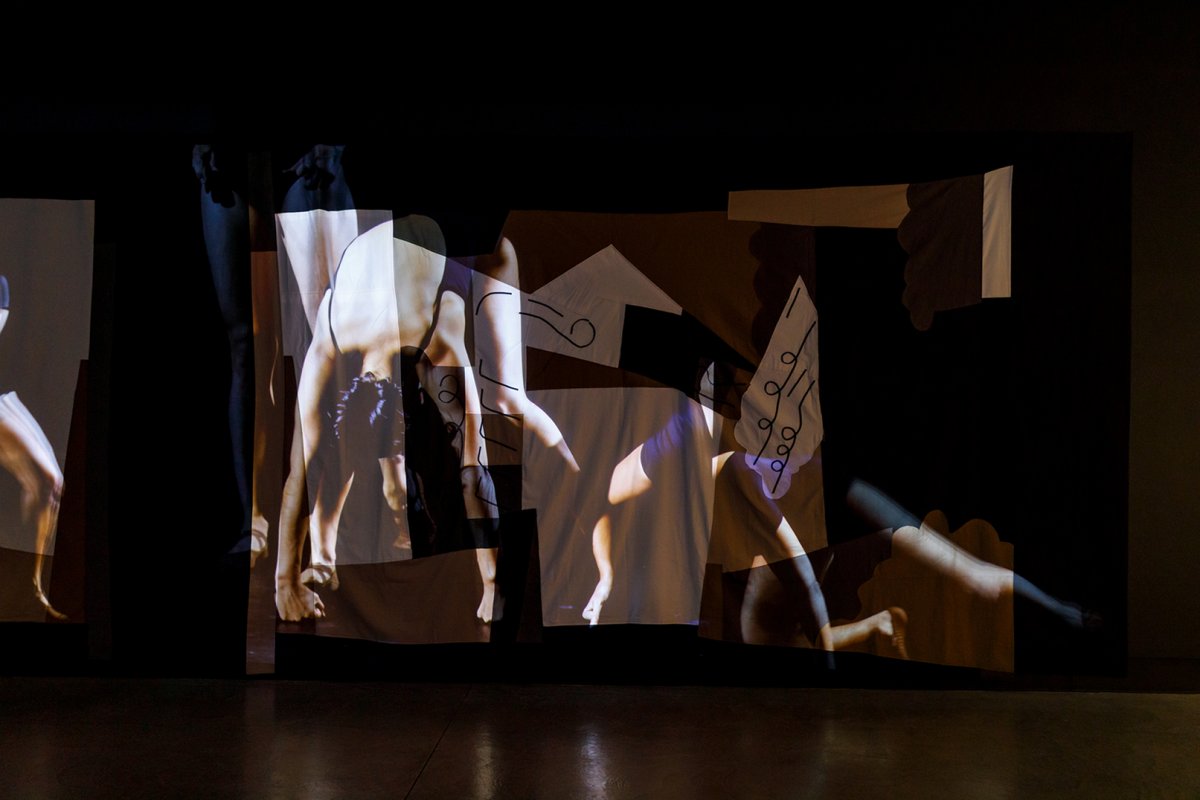The Goat Dance
Sally Smart
Australian, born 1960
P.A.R.A.D.E. The Goat Dance 2019-22
two-channel digital video projection, high definition, colour, sound; duration: 09:03 minutes
dance performance: Deanne Butterworth, Brooke Stamp and Lillian Steiner
cinematography: James Wright, Eugene Perepletchikov and Gregory Lorenzutti
film editing and score: Jack Coventry
P.A.R.A.D.E is a major new installation in which Sally Smart contemporises the historical avant-garde performances and designs of the Ballets Russes, established in Paris in 1909 by Russian ballet impresario Sergei Diaghilev. The Ballets Russes remains widely regarded as the most influential ballet company of the twentieth century, in large part due to their ground-breaking creative collaborations including projects with visual artists such as Pablo Picasso, Sonia Delaunay, Natalia Goncharova and Henri Matisse.
The Ballets Russes’ Parade – which Smart interprets through a layered, revisionary lens—was a ballet choreographed by Leonide Massine, with music by Erik Satie and a one-act scenario by Jean Cocteau. It premiered on May 18. 1917, at the Théâtre du Châtelet, with costumes and sets designed by Picasso in his first ballet commission. An integral component of the design was the backdrop which simulated the exterior of a theatre, in front of which a troupe of carnival performers attempt to lure passers-by to the show through a ‘parade’ of impromptu acts. The troupe comprised a Chinese magician, a young girl, a part of acrobats, a horse, and several dancers in huge cardboard cubist costumes (reflecting Picasso’s ground-breaking images). So influential were the set design and costumes of Picasso, that it is said they inspired the emergence of the Surrealist movement, participants of which sought to balance a rational vision of life with one that asserted the power of the unconscious and dreams.
More than a century later, Smart’s experiential and immersive environment of textiles, sculptural elements and performance is inspired by the original Parade. The act of cutting, splicing, pinning, layering, and manipulating multiple component parts to define and activate space is central to Smart’s practice. Her use of fabric elements particularly extends to her long-standing interest in the domestic and feminine, and a desire to fracture or rupture societal expectations of gendered roles.
The compositional device of the curtain is a conceptual framework upon which choreographed movements are projected, amplifying Smart’s intention that her ‘performance’ and sculptural assemblages point to the boy’s capacity to hold and transition between multiple states and emotions simultaneously. P.A.R.A.D.E. is a contemporary animation of the impulses of early modernist avant-garde artists whose creative program was brutally disrupted by war, totalitarianism, and displacement. Today’s dangerously fractious geo-political climate, and worldwide social and cultural disruption caused by COVID 19 layers Smart’s installation with poignancy and urgency, placing us as it does literally in a parade of trans-national ideas about identity, relationships between the active and passive body politic, our histories, and our present moment.


